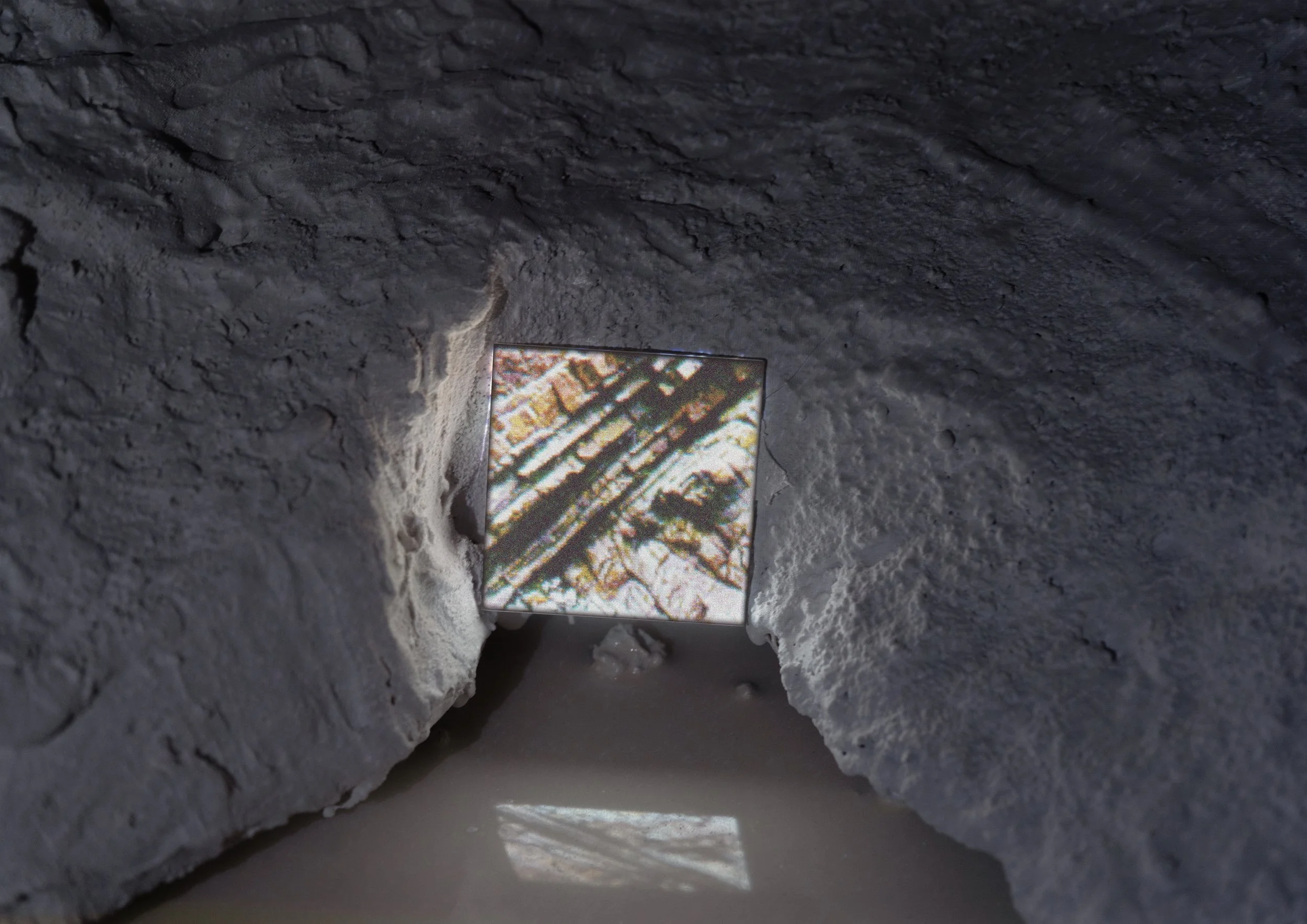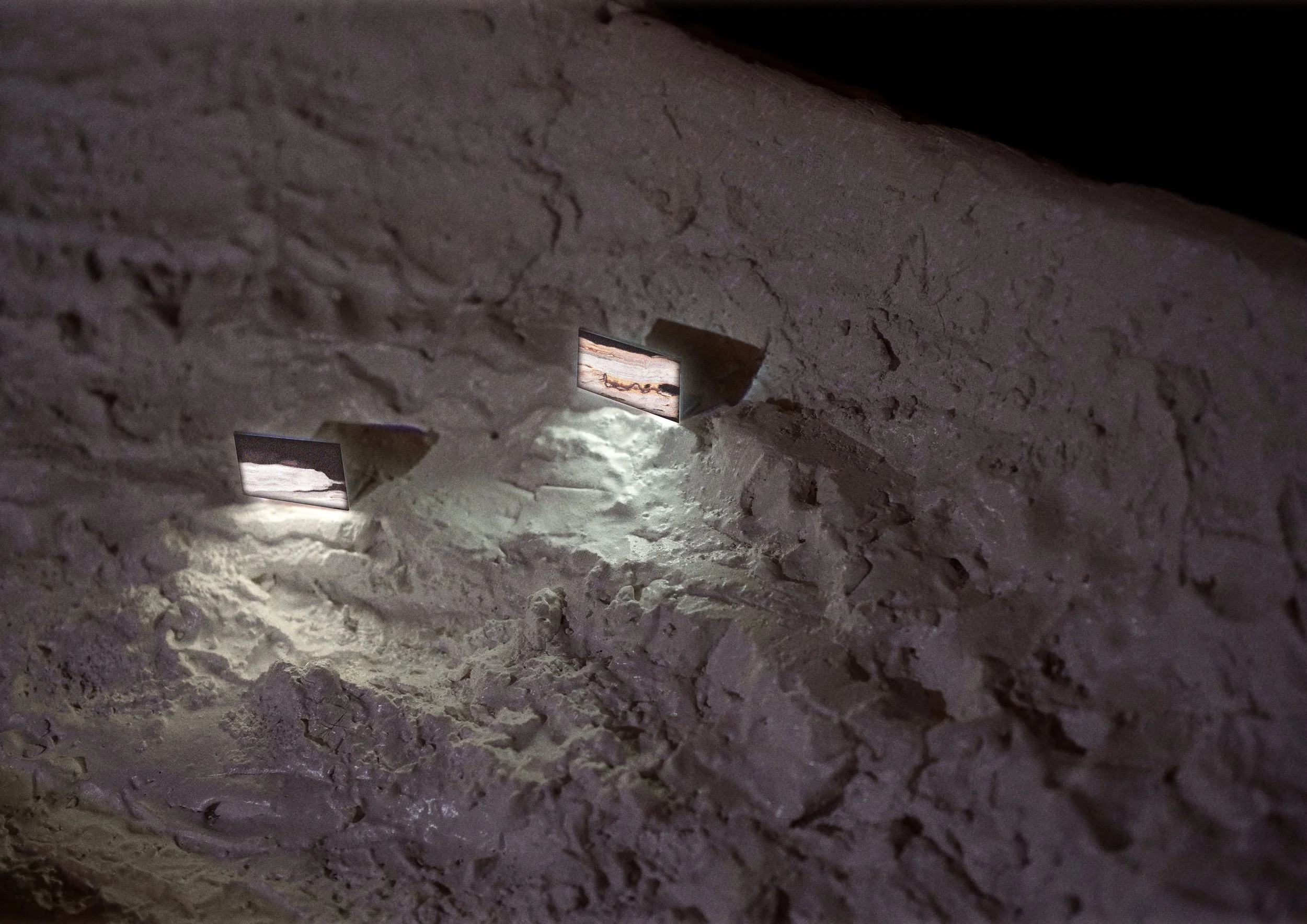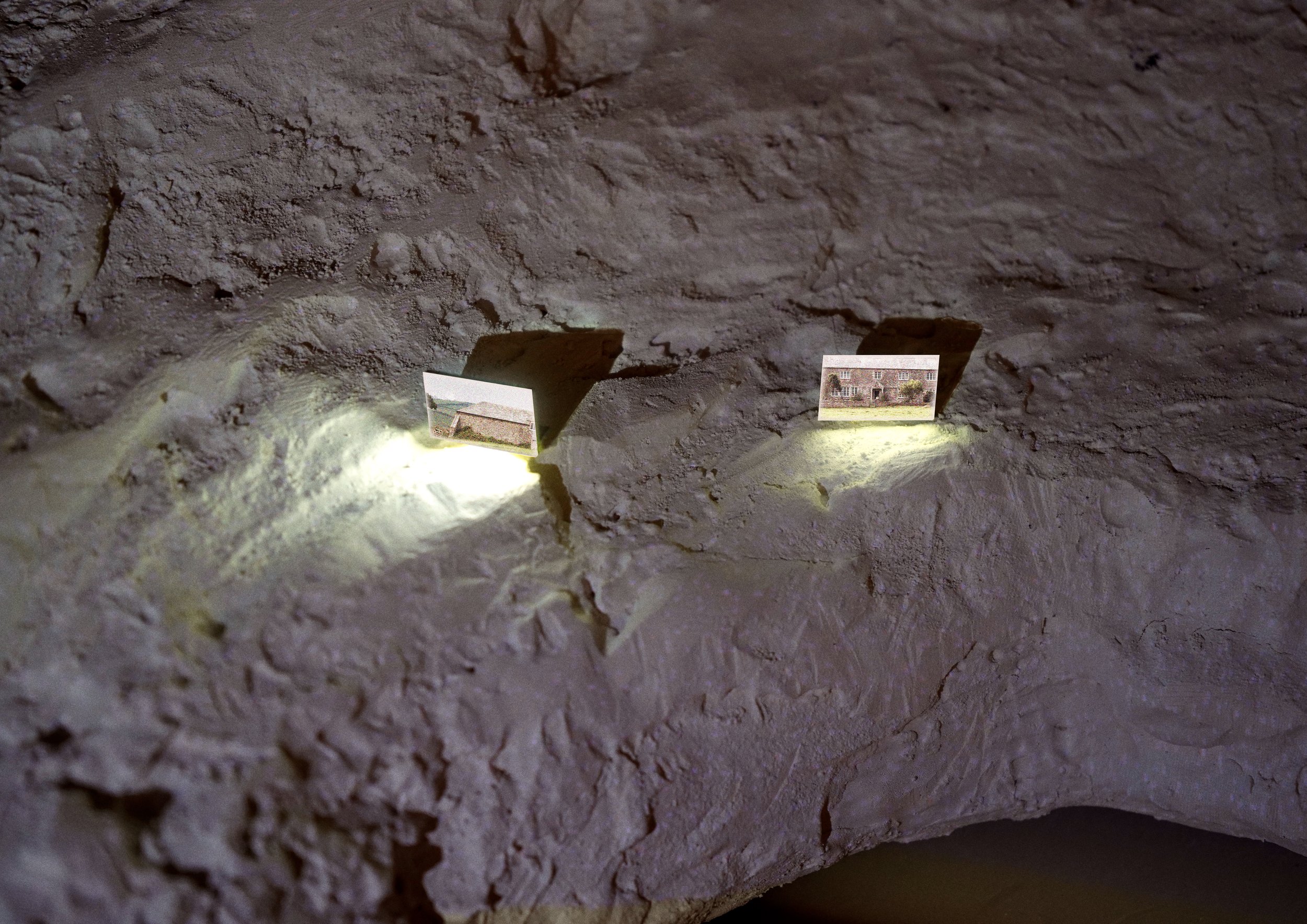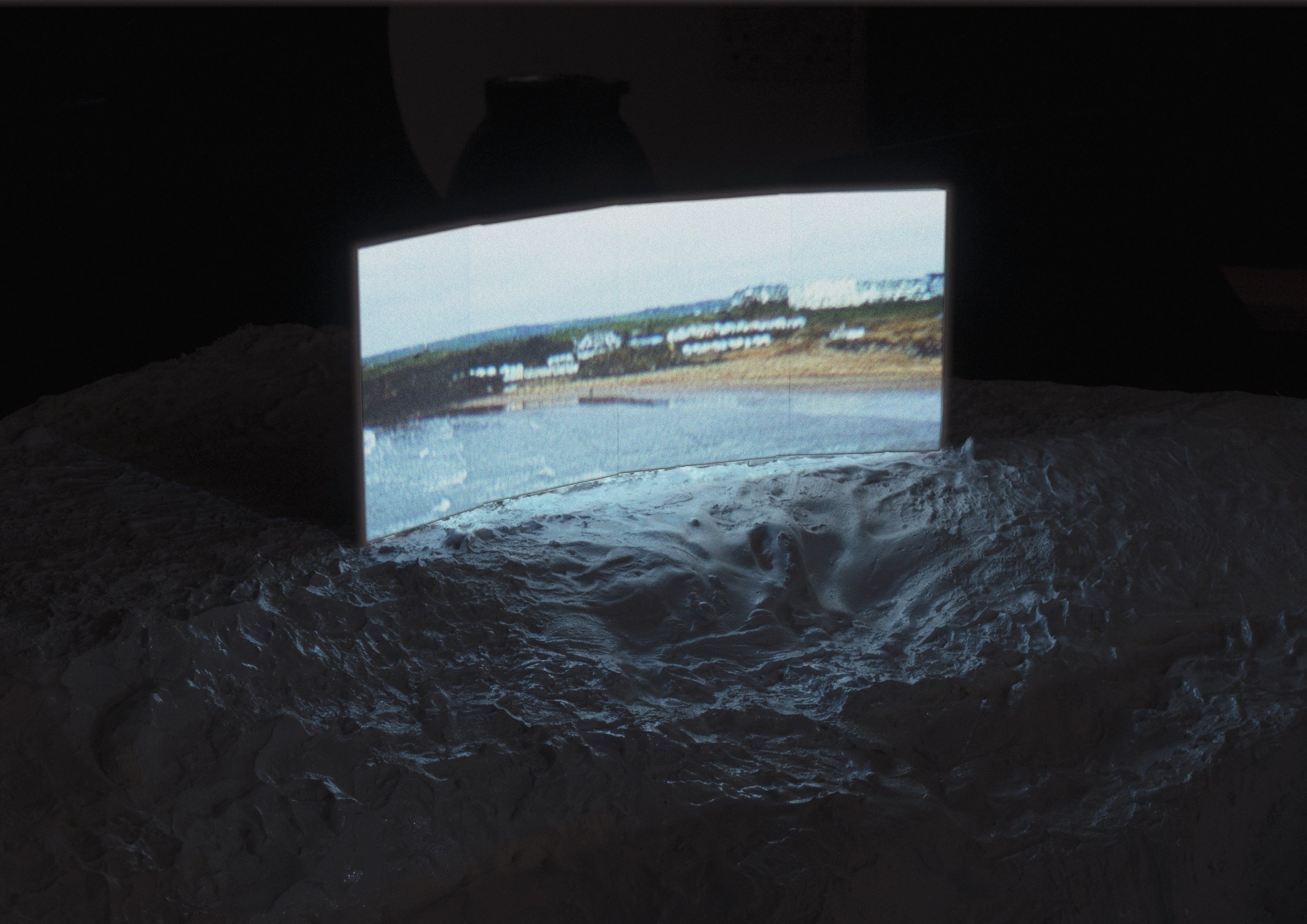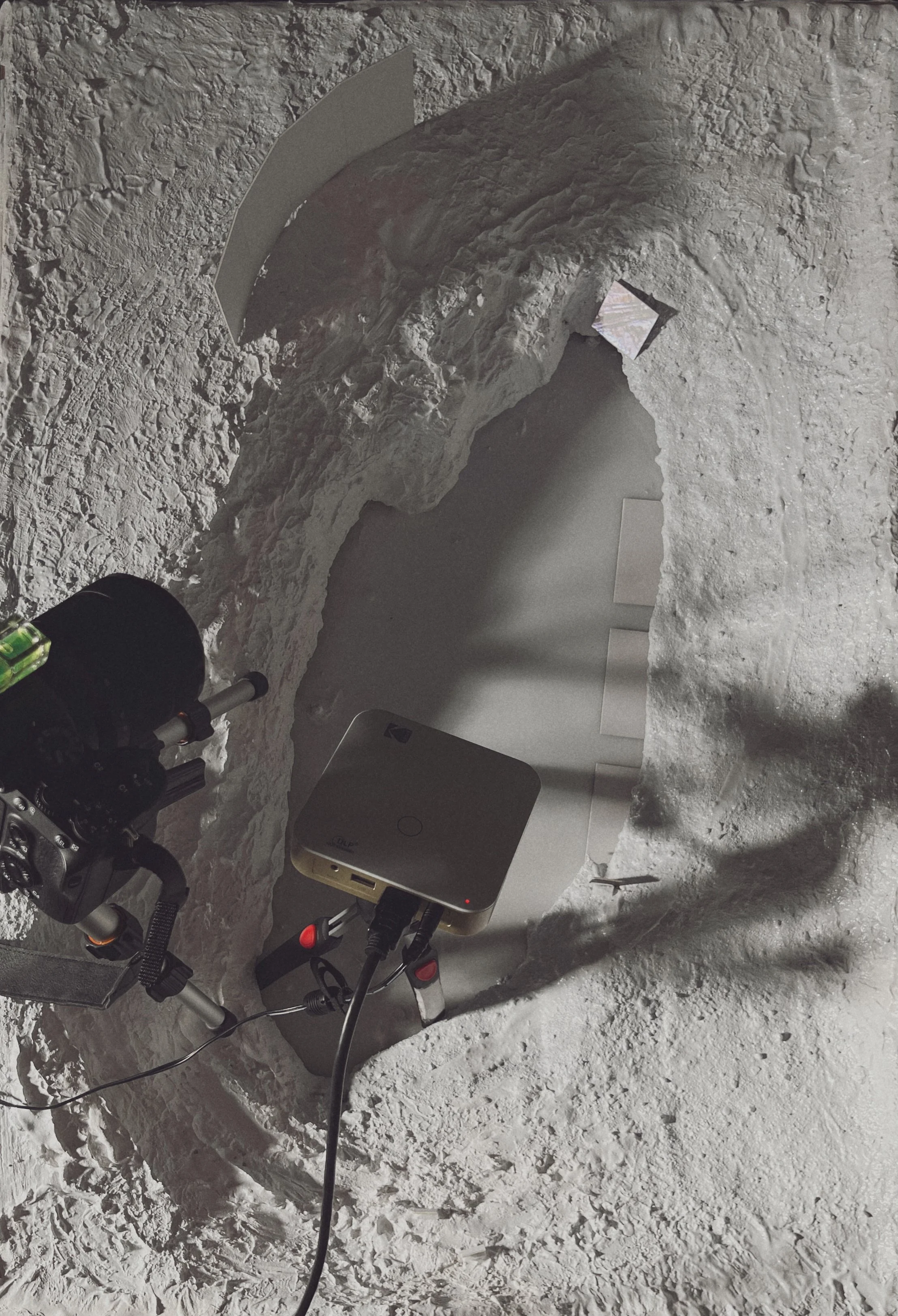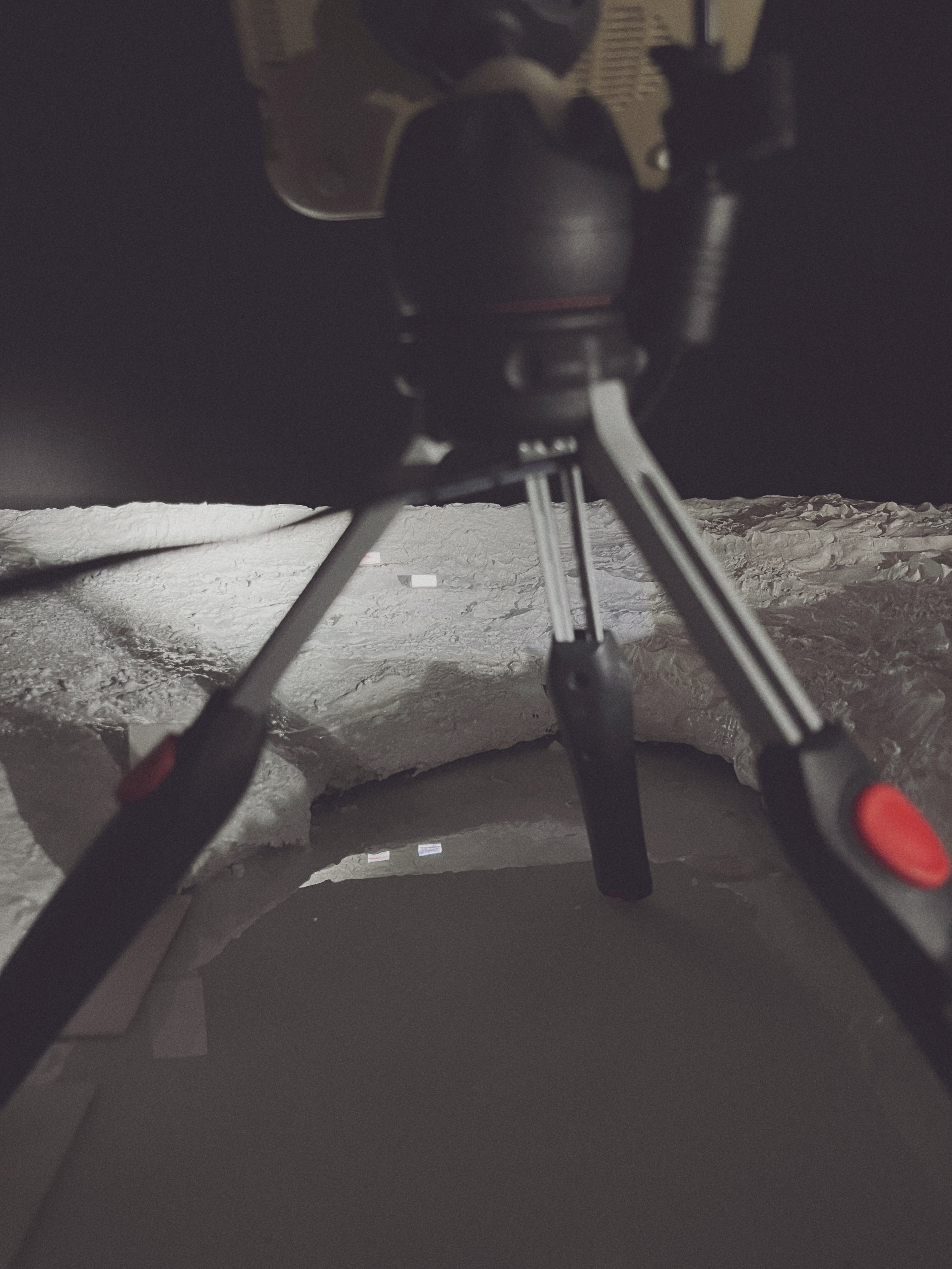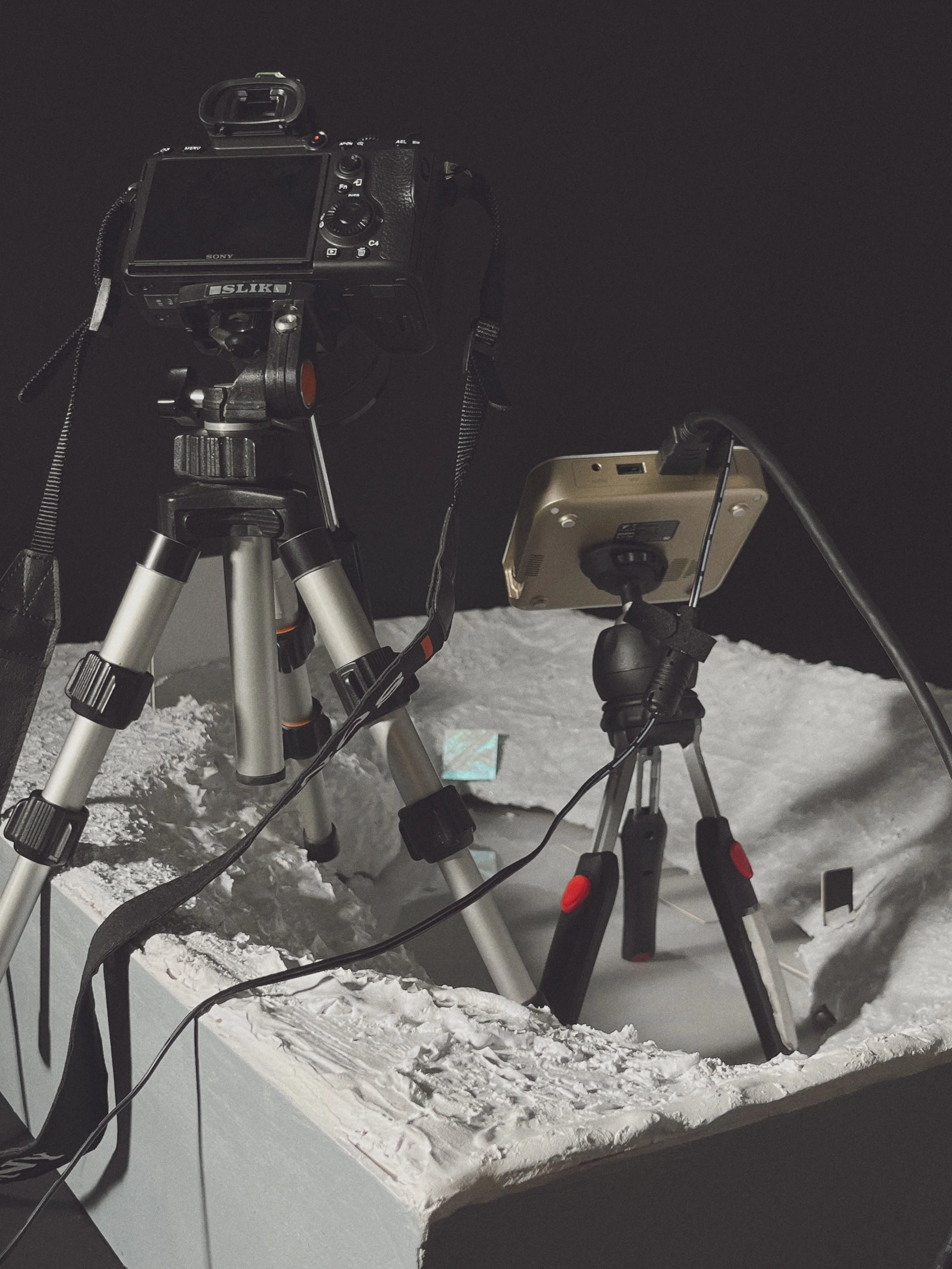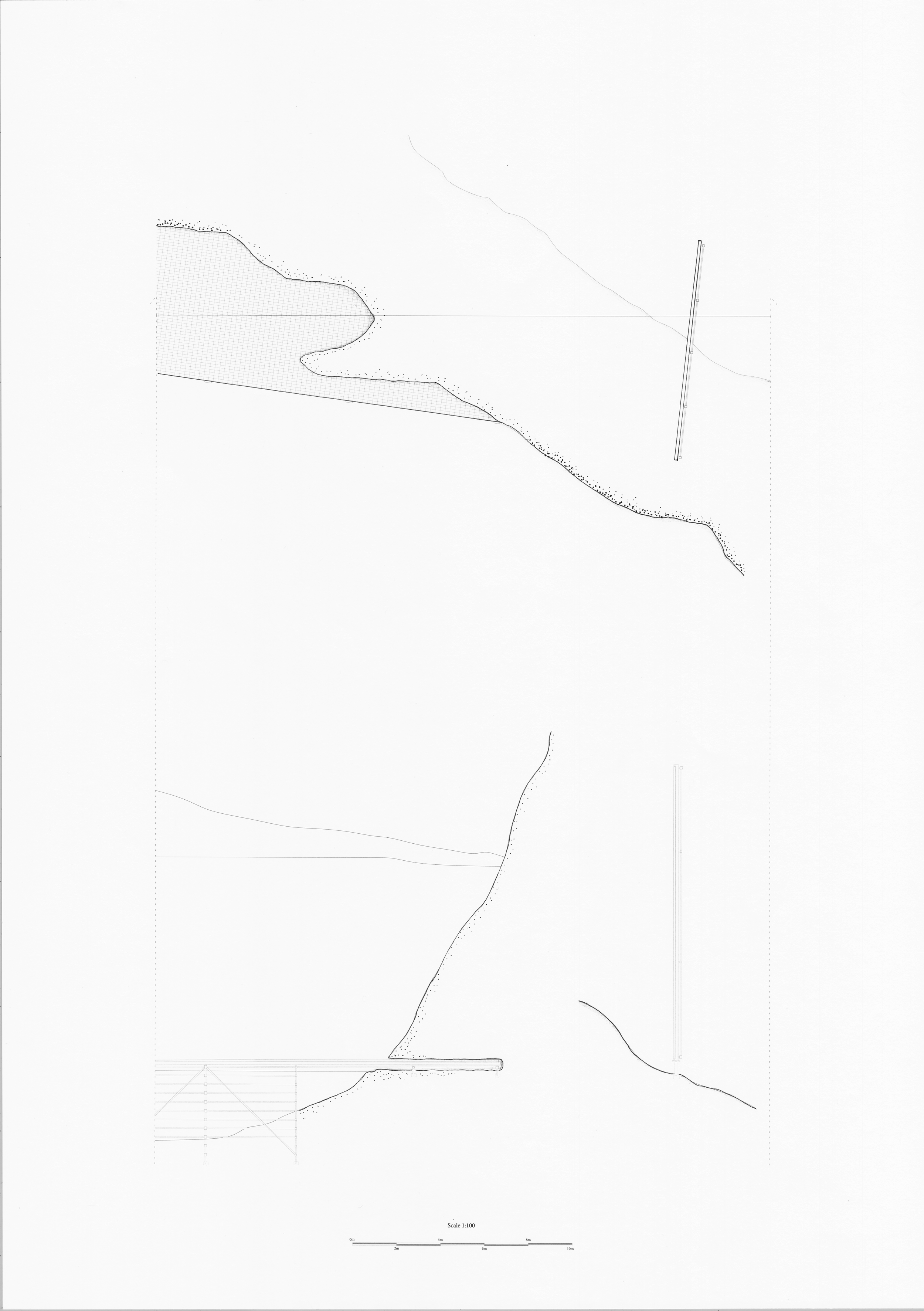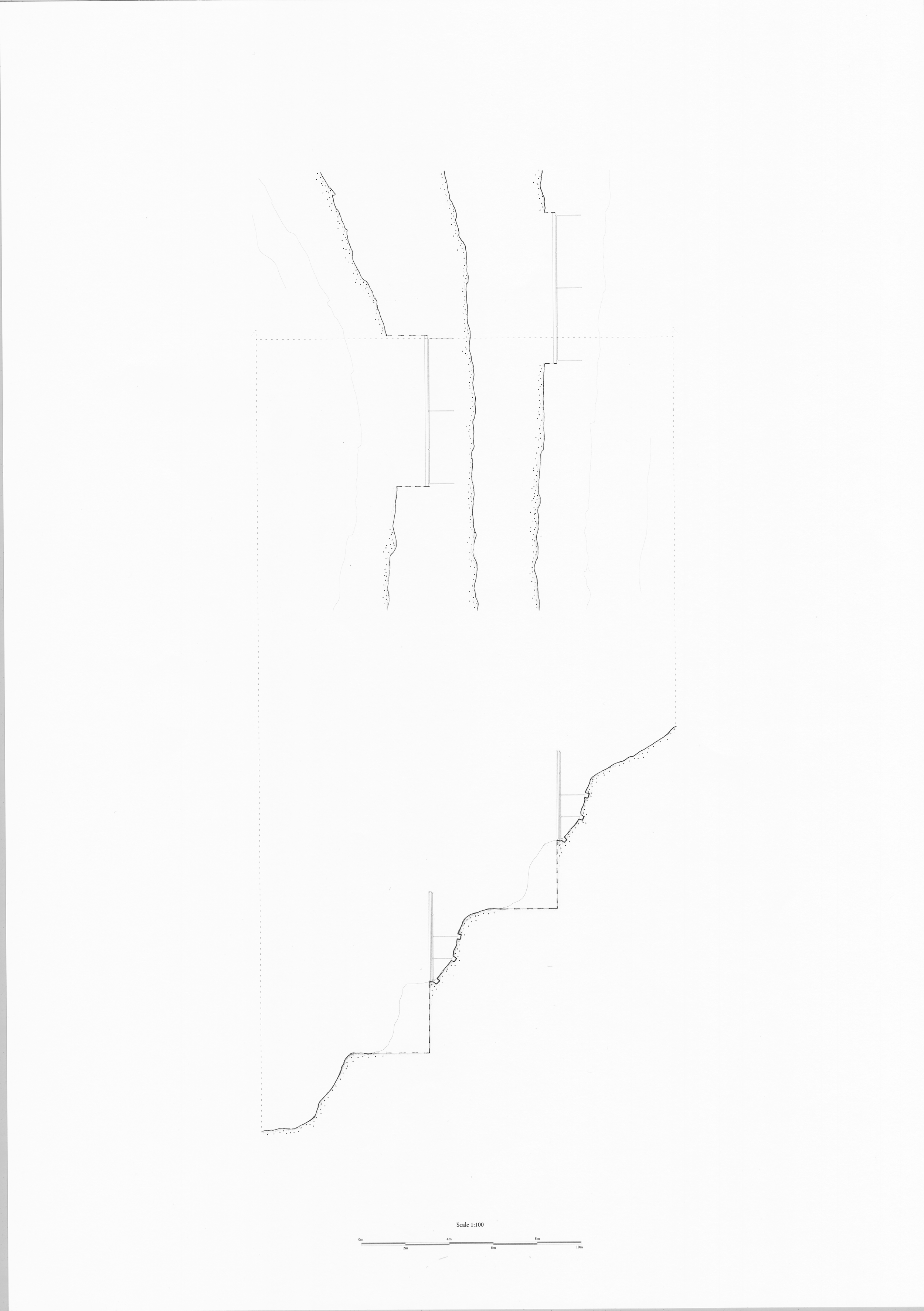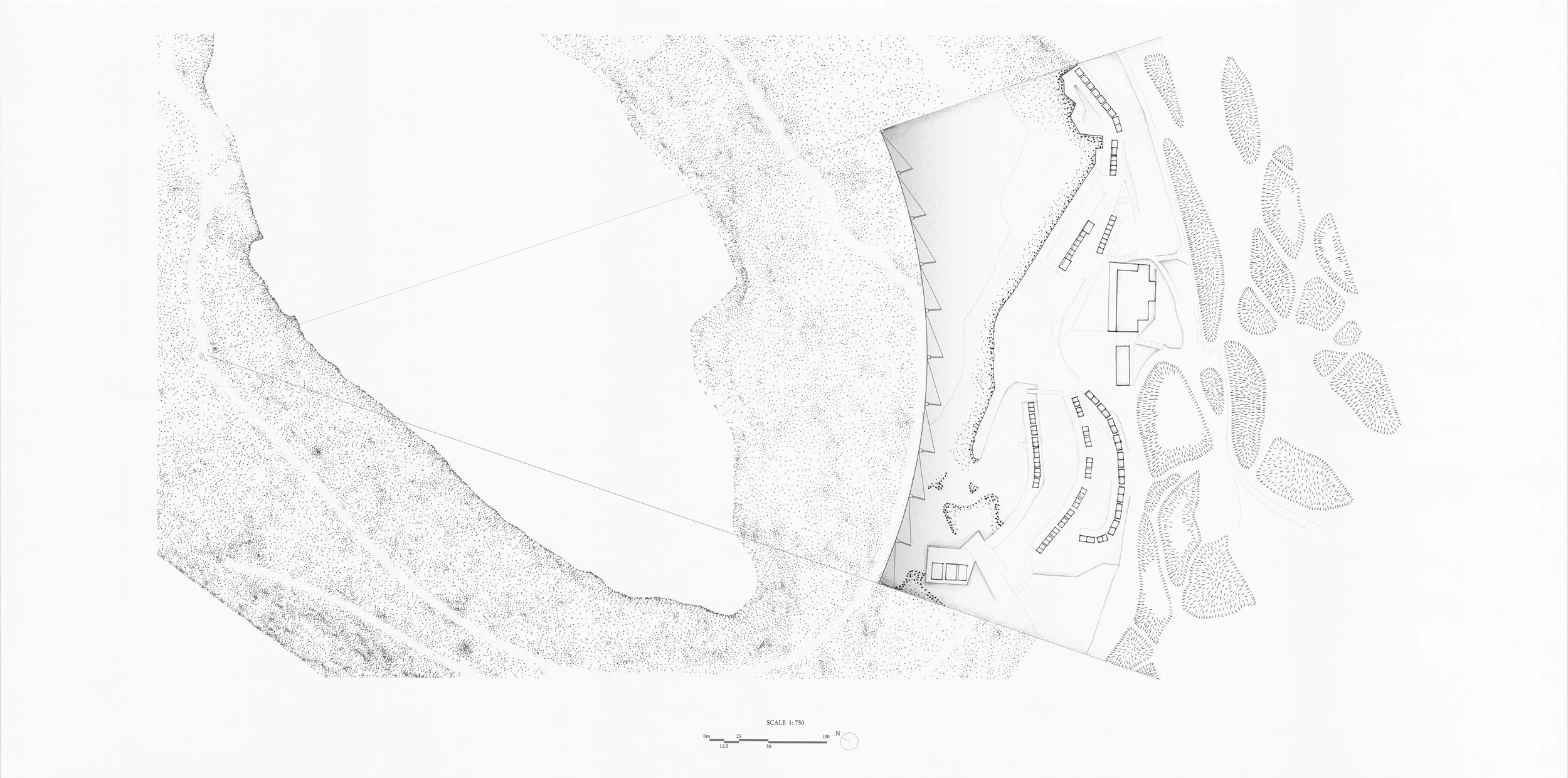Learning is understood as a form of accessing new undiscovered portals in other worlds and being able to understand those worlds through studying them. This idea is framed around forming new ways of seeing reality and its ability to convey new information within just the frame of an image, a central form to which people connect today. This intention is envisioned through the presentation of a slate quarry as a classroom. Inserted screens act as spatial tools that connect distant locations and intense narratives, encouraging questioning and reimagining of how places, stories, and functions are linked
Just pulling one connectivity string out of the whole system,
The Slate Quarry was the site with its potential connectivity with all the other sites in the research, which include Bude Central, Crowdy Reservoir, and Widemouth Bay cliffs. These sites shared a common theme on their own, which was about the threshold between the material and its purpose; in other words, the study of material circulation.
By reorienting perception through these visual thresholds, the space implies a critical reflection on how reality is constructed—and how alternative ways of seeing can generate new knowledge.
Material Processing: Screen Study N1.
Material Transformation: Screen Study N2.
Material Redistribution: Screen Study N1.
The proposal makes the landscape to be seen not just as isolated parts but as a living system of material, spatial, and historical relations. It aims to make these hidden networks visible, transforming the act of mapping into an experience of connectivity, where the physical and the digital, the past and the present, converge.


